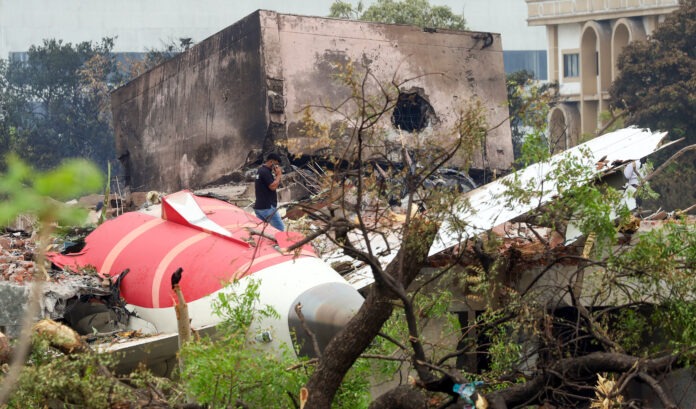Nearly a month after the fatal crash of Air India Flight AI171, the Aircraft Accident Investigation Bureau (AAIB) has submitted its preliminary report to the Ministry of Civil Aviation and other relevant authorities. The initial findings, compiled from early assessments and black box data, are expected to be released publicly later this week.
The London-bound flight AI171, which took off from Ahmedabad airport on June 12, tragically crashed just seconds after take-off into a medical college hostel. The accident claimed the lives of all 241 passengers and crew onboard, along with 19 people on the ground. Only one passenger is reported to have survived, in what authorities described as a rare instance of survival in an otherwise fatal crash.
The investigation began immediately on the day of the crash. A multidisciplinary AAIB team was mobilized, drawing experts from the Indian Air Force, Hindustan Aeronautics Limited (HAL), and the US National Transportation Safety Board (NTSB), which is involved under the International Civil Aviation Organization (ICAO) protocols due to the aircraft being US-manufactured.
The recovery of the aircraft’s black box components was crucial to the investigation. On June 13, a combined unit of the Digital Flight Data Recorder (DFDR) and Cockpit Voice Recorder (CVR) was retrieved from the wreckage. A second set was recovered three days later on June 16. The aircraft model, as per global aviation safety protocols, was equipped with dual recorders for redundancy.
With the establishment of India’s first fully-equipped black box analysis lab at the AAIB facility in New Delhi, investigators were able to begin decoding the data domestically. This marks a departure from past practice, where black box units were typically sent to laboratories abroad, in countries like the US, UK, France, or Russia, for data retrieval and analysis.
Preliminary analyses have focused on multiple scenarios, including the possibility of a dual-engine failure. Investigators are also examining human factors, weather conditions, and air traffic control communication logs from the final moments of the flight.
The report is expected to offer insight into the aircraft’s final minutes, system status, pilot actions, and any mechanical anomalies. However, officials emphasized that the preliminary report only outlines early observations and is not a conclusive determination of the cause.
Representatives from Boeing and GE, the aircraft and engine manufacturers, have also participated in the technical analysis, alongside Indian aviation experts. The NTSB team has been working closely with their Indian counterparts at the AAIB lab, in line with ICAO guidelines for international cooperation in aircraft accident investigations.
Sources within the AAIB indicated that the report would also address the aircraft’s maintenance history, recent repairs, and airworthiness certification. Questions have also been raised about the operational preparedness of the crew, fueling procedures, and runway clearance status.
While the final report, which will be released after a comprehensive investigation, may take several more months, the preliminary report is expected to guide immediate regulatory reviews and any temporary operational directives.
The Ministry of Civil Aviation is monitoring the progress closely and may consider issuing fresh safety advisories for airlines depending on the report’s findings. Aviation industry stakeholders are also awaiting recommendations on crew training, aircraft maintenance protocols, and airport operational safety.
The crash of AI171 has reignited concerns over safety audits and emergency response mechanisms. As India’s aviation sector continues its rapid expansion, experts say that robust, transparent investigations like this are vital to maintaining public confidence and strengthening regulatory oversight.
Once made public, the report is expected to trigger discussions on procedural lapses, if any, and reinforce India’s growing capability to handle complex aviation investigations in-house.



